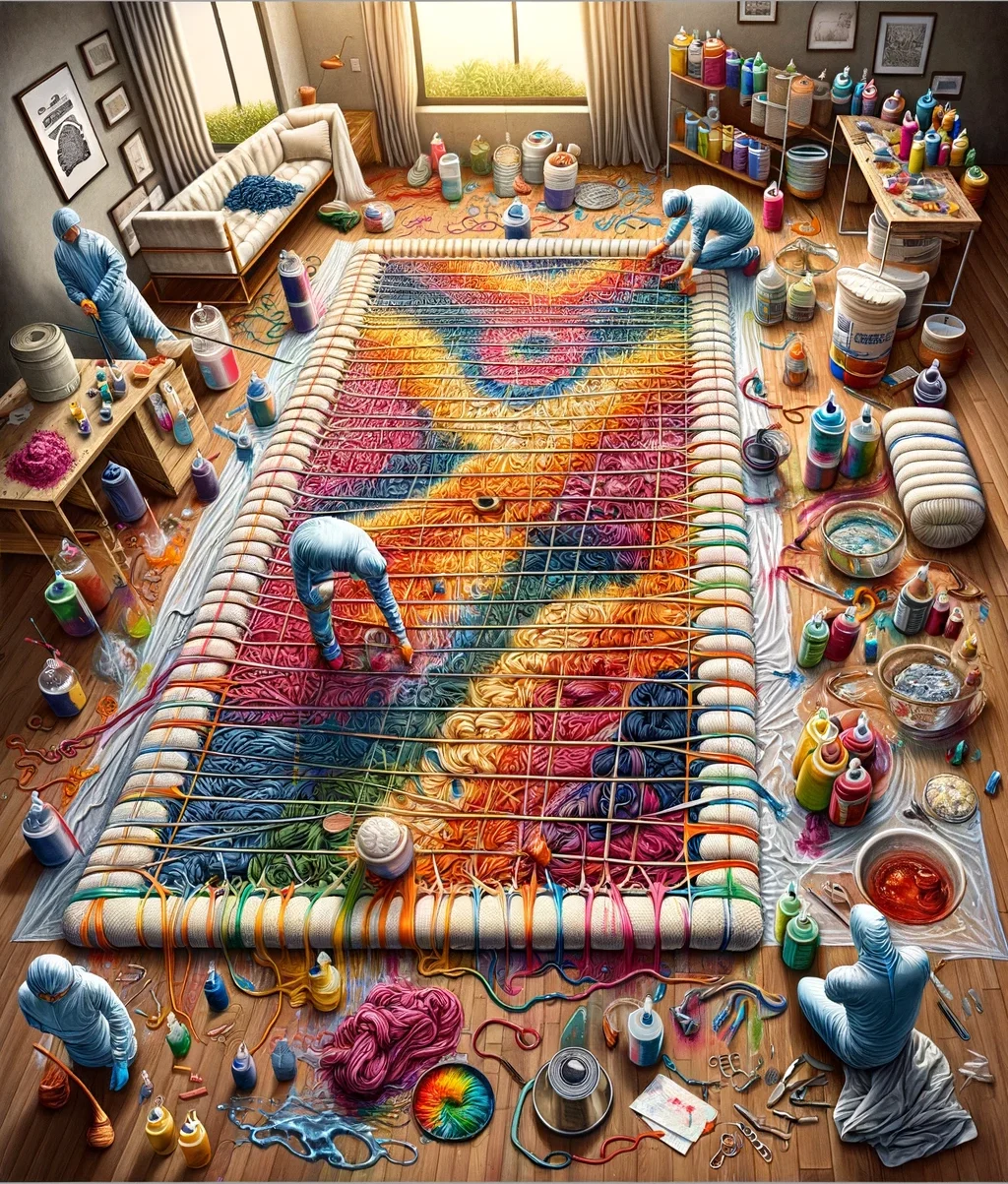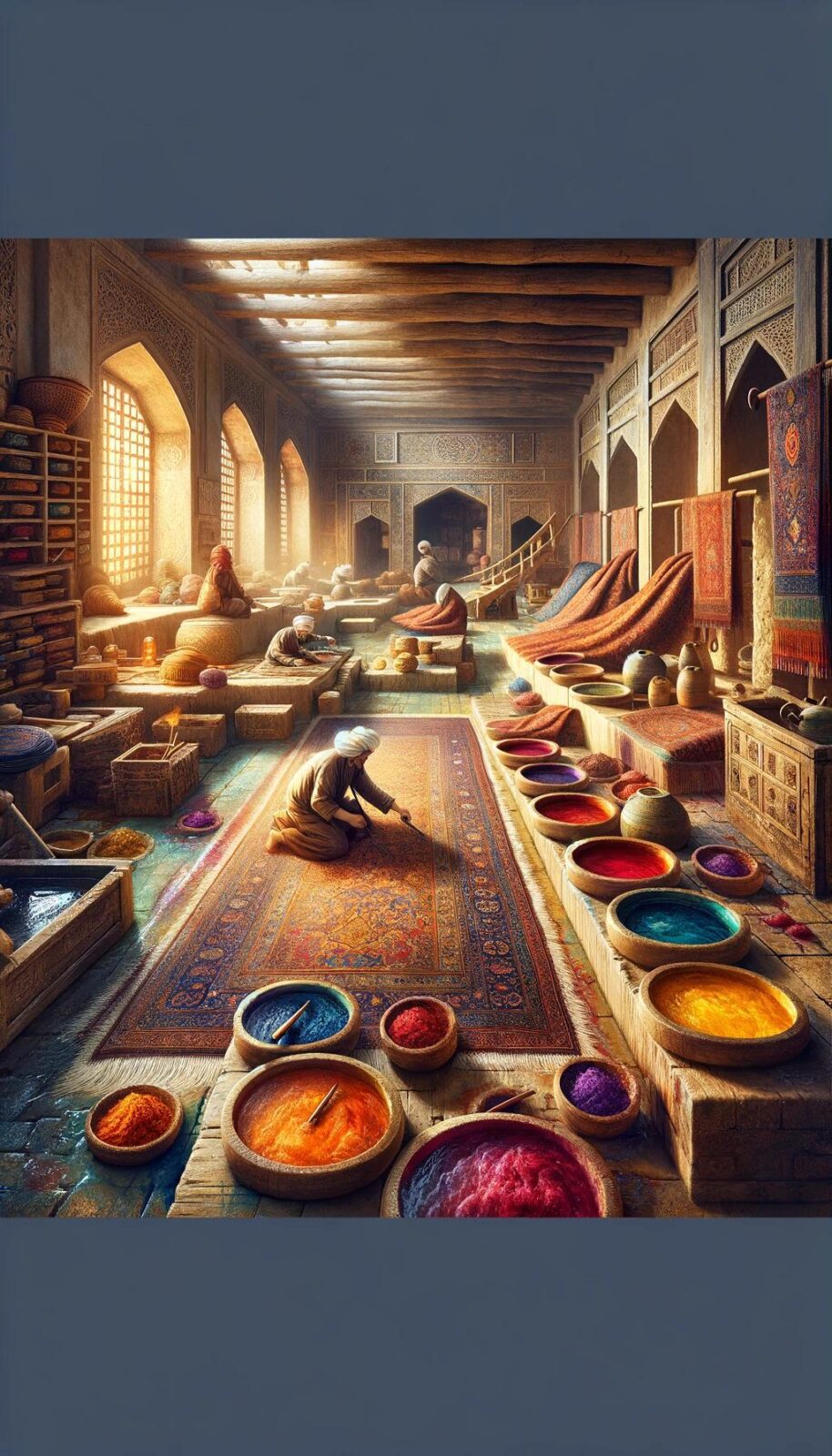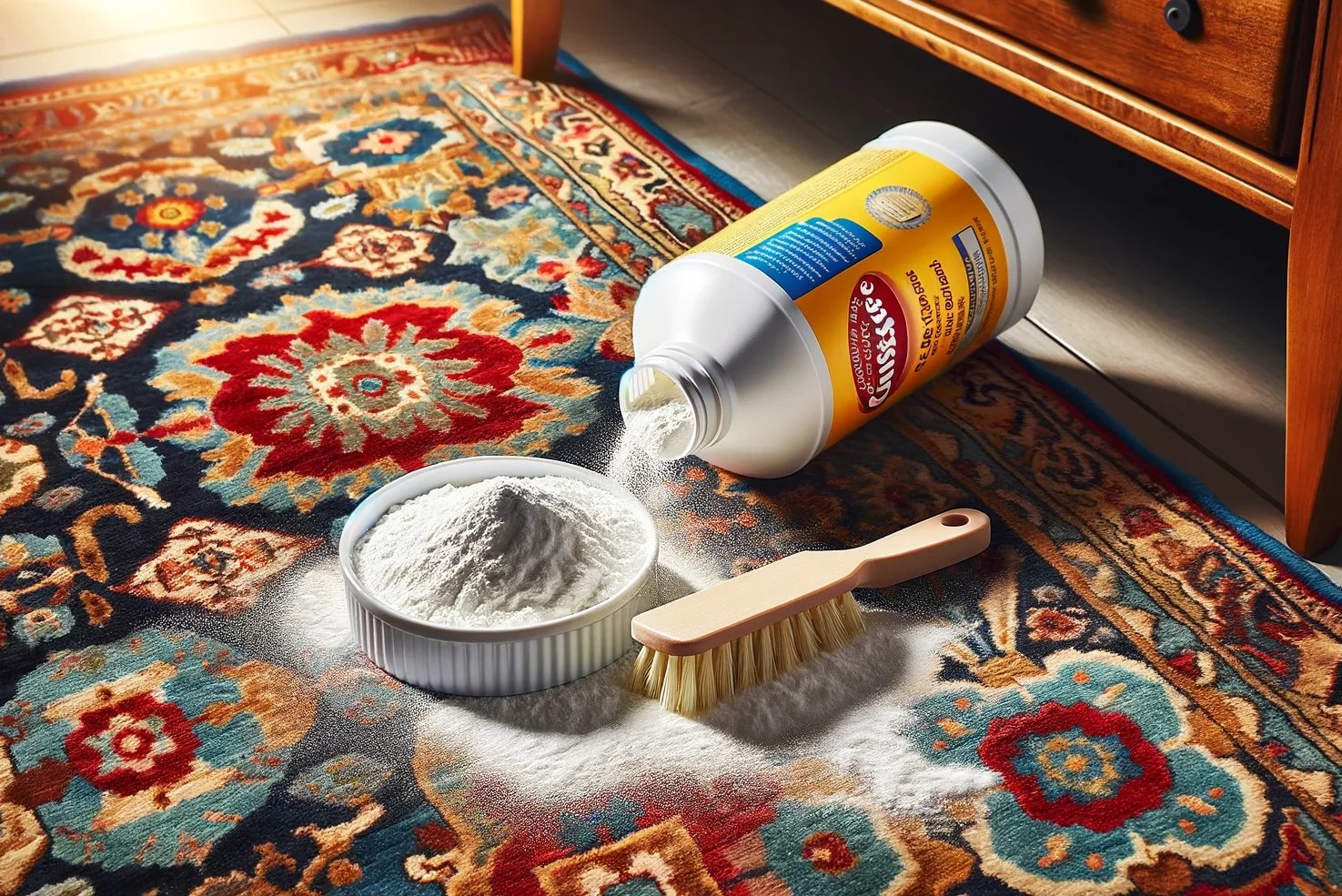Expert Guide to Carpet Dyeing - Techniques and Tips
Dyeing your carpet can transform its look and breathe new life into your space. In this comprehensive guide, we'll explore carpet dyeing techniques, tips, and answers to common questions about changing the colour of your carpet.
Carpet Dyeing Techniques
Dyeing a carpet is not just a process; it's an inventive method to rejuvenate your home's aesthetics and ambiance without the hefty cost of purchasing a new one. This cost-effective alternative can transform old, faded, or outdated carpets into vibrant, stylish pieces that enhance your living space.
To help you explore the possibilities, I will delve into various carpet dyeing techniques, each offering a unique way to give your carpet a fresh and appealing look.
1. Whole Room Dyeing
Whole room dyeing is the most comprehensive approach, ideal for carpets that have uniformly faded over time. This method involves applying a single colour over the entire carpet, effectively refreshing its look while maintaining a consistent hue throughout the room. It's perfect for those looking to restore their carpet to its original colour or opting for a complete colour change.
2. Colour Restoration
Colour restoration is specifically designed to revive the original colour of your carpet. Over time, carpets can lose their vibrancy due to sunlight exposure, heavy foot traffic, or spills. Colour restoration techniques focus on matching the original dye as closely as possible, bringing back the carpet's initial glory and brightness.
3. Spot Dyeing
Spot dyeing targets specific areas of the carpet that have been stained or discoloured. This precise method involves mixing a custom dye to match the carpet's existing colour and applying it only to the affected areas. It's an ideal solution for carpets with small, localized stains that do not require full-room dyeing.
4. Multicolour Dyeing
Multicolour dyeing is a creative and artistic technique that involves applying multiple colours to a carpet to create patterns, designs, or even thematic illustrations. This method allows for personalization and can be used to add a unique touch to your room, reflecting personal style or creating a focal point.
5. Gradient Dyeing
Gradient dyeing creates a beautiful transition effect from one colour to another across the carpet. This technique can be used to add depth, dimension, or a modern twist to your flooring. It's particularly effective in larger rooms or spaces where a dramatic visual effect is desired.
6. Stencil Dyeing
Stencil dyeing involves using stencils to apply patterns, logos, or motifs onto the carpet. This method allows for intricate designs and can be used to customize the carpet with specific themes, brand identities, or artistic elements. It's a great way to personalize or brand your space.
7. Over-Dyeing
Over-dyeing is a technique where a darker dye is applied over an existing lighter-coloured carpet. This method can completely transform the look of a room, offering a bold and dramatic change. It's particularly suitable for vintage or antique carpets, giving them a new lease on life with a contemporary twist.
Tie-Dyeing Techniques
1. Gather Your Supplies
Before you start the tie-dyeing process, ensure you have the necessary supplies. You'll need fabric dye, rubber bands, plastic squeeze bottles, and protective gear like gloves and aprons.
2. Prepare the Carpet
Start by cleaning your carpet thoroughly to remove any dirt or stains. A clean surface will absorb the dye better. Allow the carpet to dry completely before proceeding.
3. Create Your Design
Plan the design you want for your carpet. You can go for a classic tie-dye spiral or create your own unique pattern. Use the rubber bands to bind sections of the carpet, creating resist areas where the dye won't penetrate.
4. Apply the Dye
Mix the fabric dye according to the manufacturer's instructions. Use the plastic squeeze bottles to apply the dye to the carpet, making sure to saturate the bound sections thoroughly.
5. Let It Set
Once you've applied the dye, cover the carpet with plastic wrap to keep it moist. Let it set for the recommended time (usually several hours) to allow the dye to penetrate and set.
6. Rinse and Dry
After the waiting period, rinse the carpet under cold water until the water runs clear. Hang the carpet to dry, preferably outdoors, to allow any excess dye to drip off.

Carpet Dye Spray
1. Choose the Right Dye
Select a carpet dye spray that matches the colour you want to achieve. Ensure it's designed for use on carpets and follow the manufacturer's instructions.
2. Prepare the Area
Clean the carpet and the surrounding area to ensure there's no dust or debris that could affect the dye's adhesion. Cover any nearby furniture or items to protect them from overspray.
3. Test a Small Area
Before applying the dye to the entire carpet, test it on a small, inconspicuous area to ensure it produces the desired color and adheres well.
4. Apply the Dye
Hold the spray nozzle a few inches above the carpet's surface and apply the dye in even, overlapping strokes. Work in small sections to ensure even coverage.
5. Allow to Dry
Let the dyed carpet dry completely. This may take a few hours to overnight, depending on the dye and humidity levels.
6. Enjoy Your Newly Dyed Carpet
Once the carpet is dry, you can move your furniture back in and enjoy your refreshed living space.
Joe Rugs - Carpet Expert
Hello! I'm Joseph Rugs, the founder of CarpetJoe.com and your guide through the intricate world of carpets. Born and raised in London with a deep-rooted passion for art and culture, I've explored the globe to bring the rich tapestry of carpet weaving right to your screen. My academic background in arts and humanities from Oxford has fueled my curiosity, leading me to uncover the stories behind every knot and weave. As a family man, my adventures are shared with my loved ones, enriching our lives with every piece of art we encounter. Join me as we explore the beauty and craftsmanship of carpets together.
Carpet Care & Maintenance
Rug Cleaning Mastery and Solutions to Common Damages
Understanding the proper techniques for rug cleaning is essential for maintaining their beauty and longevity. Regular vacuuming is a key step in preventing dust and dirt accumulation. However, deeper cleaning methods, such as steam cleaning or dry cleaning, are necessary for removing stubborn stains and embedded dirt.
Steam cleaning, or hot water extraction, is particularly effective for thorough cleaning and sanitizing.
For delicate rugs, dry cleaning with special powders or solvents is advisable.
Frequently Asked Questions
Yes, you can dye your carpet to change its colour or revive its appearance. Carpet dyeing is a cost-effective way to transform your flooring without the need for replacement.
Absolutely! Changing the color of a rug through dyeing is a common practice. It allows you to match your rug with new decor or rejuvenate an old rug.
Yes, carpet dyeing is an effective method for changing or refreshing the color of your carpet. When done correctly, it can produce impressive results, making your carpet look vibrant and new.
Yes, Dylon is a brand of fabric dye that can be used to dye rugs and carpets. Follow the dye manufacturer's instructions for the best results when using Dylon or any other fabric dye.
Traditional Persian rugs often use natural dyes derived from plants, insects, and minerals. These dyes create the rich and vibrant colors associated with Persian rugs. Modern rugs may use synthetic dyes as well.
For indoor rugs, increase airflow with fans, use a dehumidifier to reduce room humidity, and consider using a hair dryer or heater for spot drying. Ensure the room is well-ventilated.
The cost of dyeing a rug can vary depending on factors such as the size of the rug, the type of dye used, and whether you choose to hire a professional or do it yourself. It's advisable to obtain quotes from professionals if you're considering their services.
Removing stains from a Persian rug requires care. Blot the stain gently with a clean, white cloth to absorb as much of the spill as possible. Avoid rubbing, as it can spread the stain. Consult a professional rug cleaner for tough stains.
To permanently dye a rug, follow the dye manufacturer's instructions carefully. Ensure that the dye penetrates the rug fibers and sets properly. Properly dyed rugs can maintain their color for a long time with proper care.






